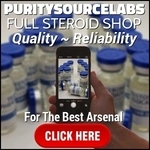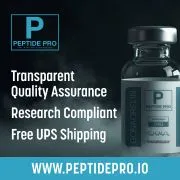I just received an email that Umbrella Labs is now offering cyclazodone!

Nootropic compounds are best known for their cognitive enhancing abilities in individuals suffering from disorders such as Alzheimer’s diseases, schizophrenia, attention deficit hyperactivity disorder, or general age-related decline. Nootropics were initially developed in the 1960s with the synthesis of piracetam, an increasingly popular and highly researched compound. Since then, several highly researched nootropics such as phenylpiracetam hydrazide and aniracetam have been structurally derived from piracetam. Nootropics are named based on both their effects and their nature; the group of compounds is divided into four categories: classical nootropic compounds, cholinergic, plants and their extracts, and substances that increase brain metabolism. Each of these categories is under review while a substantial amount of research is being conducted examining uses of the compounds, indications and contraindications, experimental treatments, and potential effective dosages [1].
Main Research Findings
1) Treatment with pemoline was shown to be moderately effective in adults with ADHD. While treatment was generally well-tolerated the researchers concluded that it should be considered as a secondary ADHD medication due to concerns of hepatic dysfunction.
2) When examining the effects of pemoline treatment in adolescents experiencing substance abuse disorder (SUD), the research team determined that the compound was capable of treating ADHD, but had minimal effects on conduct disorder (CD) or SUD.
3) Pemoline was found to be an effective treatment for attention deficit hyperactivity disorder (ADHD) in adolescents of an average age of 14 years old.
Selected Data
1) Nootropic compounds are known for their ability to improve cognitive functioning in cases related to attention deficit hyperactivity disorder (ADHD). Despite the increased awareness surrounding the mechanism behind ADHD in adults, there is limited research available regarding pharmaceutical interventions for the disorder. Cyclazodone is a derivative of the popular nootropic, pemoline, that is currently being investigated for the benefits the compound has the potential to elicit in individuals experiencing symptoms of ADHD [2].
The research team of Wilens et. al examined how administration of pemoline to adults with ADHD affected symptoms, as well as how the compound was tolerated by the test subjects. 35 participants exhibiting symptoms related to DSM-III-R and -IV ADHD took part in a 10-week, double-blind, crossover, placebo-controlled study where each subject received either a 3 mg/kg dose of pemoline, or a placebo equivalent.
Prior to the initiation of the experiment, standardized psychiatric instruments were used to diagnose participants with ADHD and take note of the manifestation of symptoms related to generalized depression and anxiety disorders. Each participant was required to attend biweekly follow up appointments where all symptoms of ADHD, depression, and anxiety were separately assessed in order to record instances of improvement or regression. Changes in ADHD symptoms were specifically measured using the ADHD symptom checklist and the Clinical global Impression scales of Severity and Improvement [2].
2) Data show that 75.% of high school students report using addictive substances while 11.4% of 13-18 year-old individuals experience a lifetime prevalence of SUD and an 8.3% 12-month prevalence of SUD. That being said, one of the primary comorbidities associated with adolescents experiencing a greater severity of SUD is ADHD [3].

What is Cyclazodone?
N-Cyclopropylpemoline, also referred to as Cyclazodone, is considered a nootropic compound that is structurally related to pemoline, a central nervous system stimulant. Cyclazodone was first developed by the American Cyanamid Company in the 1960s, and while research is limited on the effects of the nootropic it has been reported to enhance focus and stamina, promote mild euphoria, and trigger the release of dopamine and norepinephrine in the brain.Nootropic compounds are best known for their cognitive enhancing abilities in individuals suffering from disorders such as Alzheimer’s diseases, schizophrenia, attention deficit hyperactivity disorder, or general age-related decline. Nootropics were initially developed in the 1960s with the synthesis of piracetam, an increasingly popular and highly researched compound. Since then, several highly researched nootropics such as phenylpiracetam hydrazide and aniracetam have been structurally derived from piracetam. Nootropics are named based on both their effects and their nature; the group of compounds is divided into four categories: classical nootropic compounds, cholinergic, plants and their extracts, and substances that increase brain metabolism. Each of these categories is under review while a substantial amount of research is being conducted examining uses of the compounds, indications and contraindications, experimental treatments, and potential effective dosages [1].
Main Research Findings
1) Treatment with pemoline was shown to be moderately effective in adults with ADHD. While treatment was generally well-tolerated the researchers concluded that it should be considered as a secondary ADHD medication due to concerns of hepatic dysfunction.
2) When examining the effects of pemoline treatment in adolescents experiencing substance abuse disorder (SUD), the research team determined that the compound was capable of treating ADHD, but had minimal effects on conduct disorder (CD) or SUD.
3) Pemoline was found to be an effective treatment for attention deficit hyperactivity disorder (ADHD) in adolescents of an average age of 14 years old.
Selected Data
1) Nootropic compounds are known for their ability to improve cognitive functioning in cases related to attention deficit hyperactivity disorder (ADHD). Despite the increased awareness surrounding the mechanism behind ADHD in adults, there is limited research available regarding pharmaceutical interventions for the disorder. Cyclazodone is a derivative of the popular nootropic, pemoline, that is currently being investigated for the benefits the compound has the potential to elicit in individuals experiencing symptoms of ADHD [2].
The research team of Wilens et. al examined how administration of pemoline to adults with ADHD affected symptoms, as well as how the compound was tolerated by the test subjects. 35 participants exhibiting symptoms related to DSM-III-R and -IV ADHD took part in a 10-week, double-blind, crossover, placebo-controlled study where each subject received either a 3 mg/kg dose of pemoline, or a placebo equivalent.
Prior to the initiation of the experiment, standardized psychiatric instruments were used to diagnose participants with ADHD and take note of the manifestation of symptoms related to generalized depression and anxiety disorders. Each participant was required to attend biweekly follow up appointments where all symptoms of ADHD, depression, and anxiety were separately assessed in order to record instances of improvement or regression. Changes in ADHD symptoms were specifically measured using the ADHD symptom checklist and the Clinical global Impression scales of Severity and Improvement [2].
2) Data show that 75.% of high school students report using addictive substances while 11.4% of 13-18 year-old individuals experience a lifetime prevalence of SUD and an 8.3% 12-month prevalence of SUD. That being said, one of the primary comorbidities associated with adolescents experiencing a greater severity of SUD is ADHD [3].








